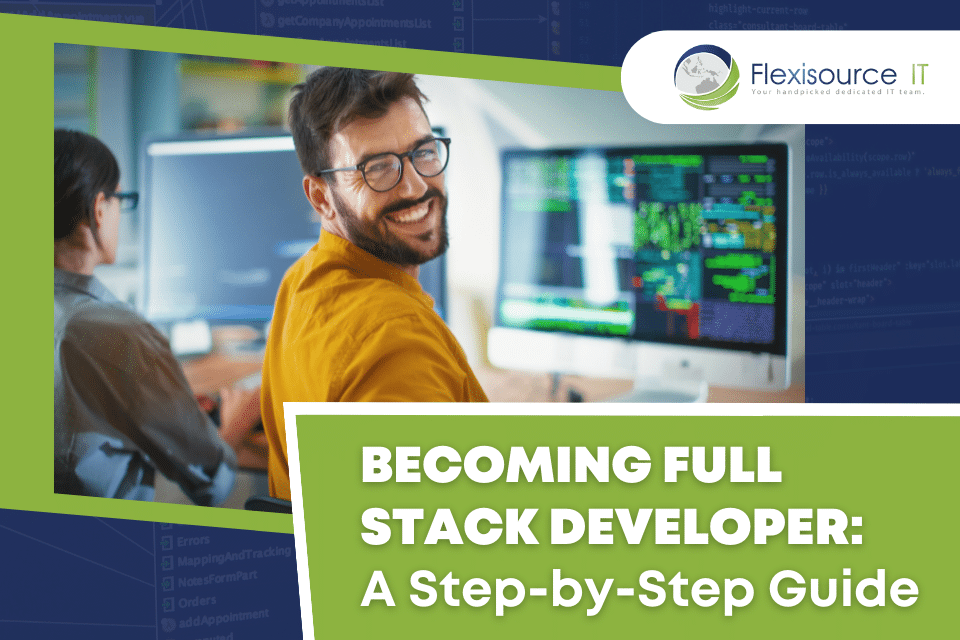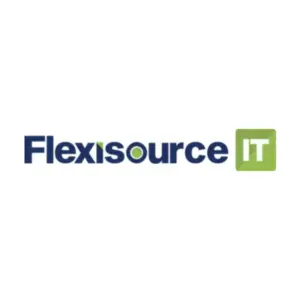So, you want to become a full stack developer? That is a great choice!
In this digital era, a full stack developer is highly sought after by many companies. Your skills as a front end developer and back end developer make you a versatile jack-of-all-trades. Basically, that makes you consistently in demand regardless of the industry you are in.
So, how does one start to become a successful full-stack web developer? In this article, we will share an easy step-by-step developers’ guide and a couple more tips and advice to help you along the way.
What Is A Full Stack Developer?
But before we share our developers’ guide, let us clear up one thing first: What exactly is a full stack developer?
A full stack developer is a developer that has both the knowledge and skills to be two things: a front end developer and back end developer.
Basically, they can design, create, and optimise all visible and interactive components. Furthermore, they can also build, maintain, and improve software, databases, and servers. Full stack developers have what it takes to build websites, web pages, and web apps.
Step By Step Guide To Becoming A Full Stack Developer
Next up, how to become a full stack developer. This is a developers’ guide that you can use as a road map:

Step 1. Understand Your Experience Level
Take a pause for a minute, before you start learning everything you need to know. First, you need to take a list of your capabilities. What do you know right now?
Imagine there is a pop quiz on stuff about front end developers or back end developers. What score will you get?
In any case, it is crucial to determine at what level you are right now. That way, it would be easier to identify what you will need later. Choose which one are you:
- Beginner — You have no idea at all. Or, you might know just a smidge.
- Amateur — You know enough. You are familiar with coding languages and know how to use the right tools.
- Expert — You already have experience either as a front end developer or back end developer. Now, you are looking to complete the package and improve yourself.
Step 2. Decide Your Goal Or Path First
Next, the road you will take to get to your destination.
If you think about money, that is already a given. Developers are in high demand. You already have plenty of options later.
Think of your goals. What do you hope to achieve? What kind of life are you aiming to have with your career as a full stack developer? Once you identify these, staying inspired and motivated throughout your journey will be easier.
Step 3. Know Tools & Skills You Need To Learn For Full Stack Developer
Much like when you were still in school, you will need the right equipment and a syllabus.
Basically, you will need these:
- Good computer
- Text editor or an Integrated Development Environment (IDE)
- Preferred web browser
- Terminal
- Design tools (Optional, but a good skill to have in your pocket)
Now that you are properly equipped, here is an outline of what you will be learning:
1. Basics of web programming.
Start with HTML and CSS and understand the fundamentals of web programming. Once you get this, you should be familiar with the following:
- Responsive web layouts to adapt to desktop and mobile view
- Custom Reusable CSS Components
- CSS Frameworks
- User Interface Design
- JavaScript
2. Learn the essential programming tools
Since you are learning to be a full stack developer, you will need to learn what front end developers and back end developers use.
For front end development:
- Bootstrap
- Angular.js
- Foundation
- Python
- JavaScript
- Elixir
- HTML and CSS
For back end development:
- Django
- Ember.js
- Lodash
- React
- D3.js
- Package Managers
- Databases
3. Basic front end deployment
You need to learn the ins and outs of front end development and how to launch a website. Here is a list you need to know:
- Enrol the domain name
- Website Hosting
- Email Hosting
- SSL certifications
- Tools to adapt the website to smaller apps
4. Front end framework and management
There are plenty of frameworks to choose from, so it is best to focus on the most used and popular. These are the go-tos right now:
- React
- Vue
- Angular
- Svelte
For front end management, it is good to also learn public administration as well.
5. Study TypeScript
It is a specialised version of JavaScript that ensures your programs are reliable and easy to perform. Businesses use it a lot, so it would be helpful for you to learn this.
6. Server-side coding language
It helps to be familiar with all coding languages. But, in reality, you might not have time for that. So you just need to learn what is popular and most used right now:
- NodeJs
- Python
- Java
- PHP
- Ruby
- C#
- Kotlin
6. Server-side framework
Once you have settled on your chosen coding language, you can pair it with these frameworks:
- NodeJs
- Python
- Java
- PHP
- Ruby
- C#
- Go
7. Database
Anything online, especially programs, has data. Data needs to be stored. For back end developers, managing this data storage is a must. Here are a couple of platforms that you can choose from to focus on:
- RDBMS (Relational Database Management System)
- PostgreSQL
- MySQL
- MS SQL
- MongoDB
- CouchDB
- Elasticsearch
- Firebase
- Microsoft Could DB
- AWS
- Redis
- SQLite
8. Testing
This is a skill that will save you time and effort and simplify your job as a full stack developer. You can use any testing framework to execute the following tests:
- End-to-End Tests
- Unit Tests
- Integration Tests
9. Content Administration
Whether you are a freelancer or work for a company, you will be asked to deal with and manage the content management systems (CMS) of the business.
10. Deployment and DevOps
Similarly to that, even if you are not part of a tech firm or team, it is good to have knowledge of DevOps. But it is completely up to you if you want to add this or not.
Step 4. Determine Your Ideal Timeline
You have a long list of things to learn on how to become a full stack developer. It can be overwhelming, that is why it is important for you to pace yourself.
What is your ideal timeline? How are you going to juggle work, life, and learning full stack development? When you set your timeline, be realistic and honest with yourself .
Step 5. Start Learning In A Format That Suits You
Part of how you will pace yourself is the learning format that suits you, there are plenty of options to choose from:
a. Degree Programs
If you are a beginner or just prefer to follow a structured learning experience, then maybe going back to school is for you. It is normally a four-year program that teaches both academic and hands-on lessons.
b. Boot Camps
This is best for developers with past experience as front end developers or back end developers. If you are an amateur and set a short timeline for yourself, then this is a viable option as well.
Similar to a degree program, a boot camp has a structured learning format with a fixed timeline. However, the difference is that you get the condensed version to learn the essentials, hands-on experience for your portfolio, and network.
c. Self-Guided Courses
If you want to do it at your own pace, then self-guided courses are a good option. These serve as a developers’ guide with added flexibility and are lighter for your wallet. If you research well, you can even find free online courses as well.
d. Tutorial Videos and Books
If you want to have more control and save money, then tutorial videos and books are good options. These days there are plenty of instructional videos on YouTube. As for books, you can borrow them or search online for free ebooks.
Step 6. Find Your Front End And Back End Skill Gaps
Check what you are lacking for front end and back end development. If you have a mentor or a teacher, you can ask them what aspects you are lacking. However, if not, you can cross-check with your peers and get their insights.
If you are already an expert front end developer or back end developer, you should not skip this.
In fact, it can be easy to overlook a couple of things since you are already experienced. That is why it is important to identify where you can improve or what parts you need to review.
Step 7. Begin Building Your Portfolio
There are many ways to build your portfolio.
If you are already an expert developer, you can have opportunities to take part in front end or back end development projects in your workplace.
For beginners and amateurs, you can add the projects you accomplished from a degree program or boot camps.
Another option is to start your own project. In this case, you can do it while you are learning. It can be anything you want, naturally. The important thing is that it showcases your skills in both front end and back end development.
Step 8. Start The Job Search
Now that you have a good portfolio, you are ready to take the plunge and start your career as a full stack developer.
Do you have a specific company or position you want to apply for? If yes, make sure to tailor your resume to match the things employers are likely to look for in potential hires.
The important thing is that your resume is easy to read and highlights the important information and your skill sets right away. In any case, there are plenty of templates and advice online to help you improve your resume.
Step 9. Do Well On The Interview
Landing an interview takes you one step closer to your goal! All you have to do now is ace it.
Make sure you are prepared before the day of the interview:
- Get to know the company
- Refresh your knowledge of front end and back end development
- Prepare sample questions and answers
- Get ready to explain your process and methodology
You Can Do It!
Keep in mind, the steps to becoming a full stack developer that we are sharing with you do not have to be the be-all-end-all guide. Think of it as a road map. You are totally free to add pit stops and other destinations along the way in your journey to becoming a full stack developer.
If you want to learn more about what it takes to become a developer, make sure to check out our blogs for more tips.







